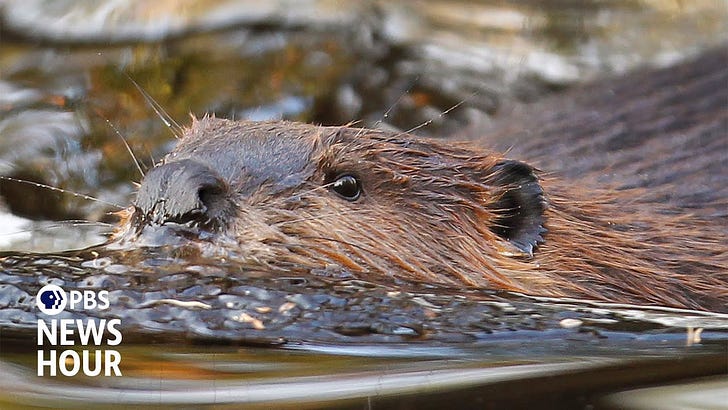Deep in the beaver wetlands of the Medicine Bow National Forest, a team of scientists wades through waist-deep water, measuring, observing, and marveling at nature’s original engineers. Led by ecohydrologist Emily Fairfax, these researchers are uncovering the critical role beavers play in climate resilience, water conservation, and wildfire mitigation.
Beavers have been shaping North American landscapes for millions of years. Before European colonization, an estimated 100 to 400 million of these industrious rodents populated the continent. But centuries of trapping and habitat destruction drove them to near extinction. Now, scientists and land managers are rethinking their relationship with beavers, recognizing them as allies in the fight against drought, wildfires, and the declining health of rivers like the Colorado.
Beavers as Climate Resilience Architects
The Medicine Bow beaver complex, maintained by a single beaver family, offers a stunning case study of their ecological impact. Fairfax’s drone footage reveals a green corridor stretching over a kilometer through a landscape still scarred by a 2020 wildfire. Unlike the surrounding burnt forest, this beaver-engineered wetland remains lush and vibrant.
“Every one of these wetlands is like a speed bump for the water,” Fairfax explains. Beavers slow water flow, allowing more to seep into the ground, replenishing aquifers and creating fire-resistant refuges. The sediment they trap improves water quality, while their dams prevent erosion and store water during dry seasons—critical as climate change disrupts precipitation patterns.
Beneath the surface, Fairfax’s team dons snorkels to study beaver dams up close. Measuring water temperature, sediment depth, and flow rate, they seek to quantify just how much these natural engineers mitigate the effects of fire and drought. Early findings confirm what conservationists have long suspected: beaver ponds act as natural firebreaks and water reservoirs, helping ecosystems recover more quickly after disasters.
Bringing Beavers Back—By Imitation
Despite their benefits, beavers still face resistance, especially from landowners wary of flooding. Viral videos show their dams being demolished in dramatic explosions. But attitudes are shifting. Instead of eliminating beavers, land managers are now learning to work with them—or even replicate their work.
Scott Miller, the Aquatic Resources Program Lead at the Bureau of Land Management (BLM), is at the forefront of this effort. His team is constructing “Beaver Dam Analogs” (BDAs), human-made structures that mimic beaver dams, to restore riparian ecosystems. At Wyoming’s Muddy Creek Watershed, they’ve built 100 of these simple yet effective barriers, helping streams retain water and vegetation recover at an accelerated pace.
For rancher Tom Chant, who has worked this land for more than two decades, BDAs are a game-changer. Once a dust bowl due to overgrazing, his pastures are now lush and shaded, with cooler water for his cattle. “If you don’t like this,” Chant quips, “you must not like grass.”
Nature’s Engineers Leading the Way
As droughts intensify and wildfires grow more destructive, beavers—and their human imitators—offer a path forward. By letting nature’s engineers do what they do best, we might just find a way to make our landscapes more resilient.
For scientists like Emily Fairfax, the message is clear: if we want to safeguard our water and forests, we should think like beavers.



